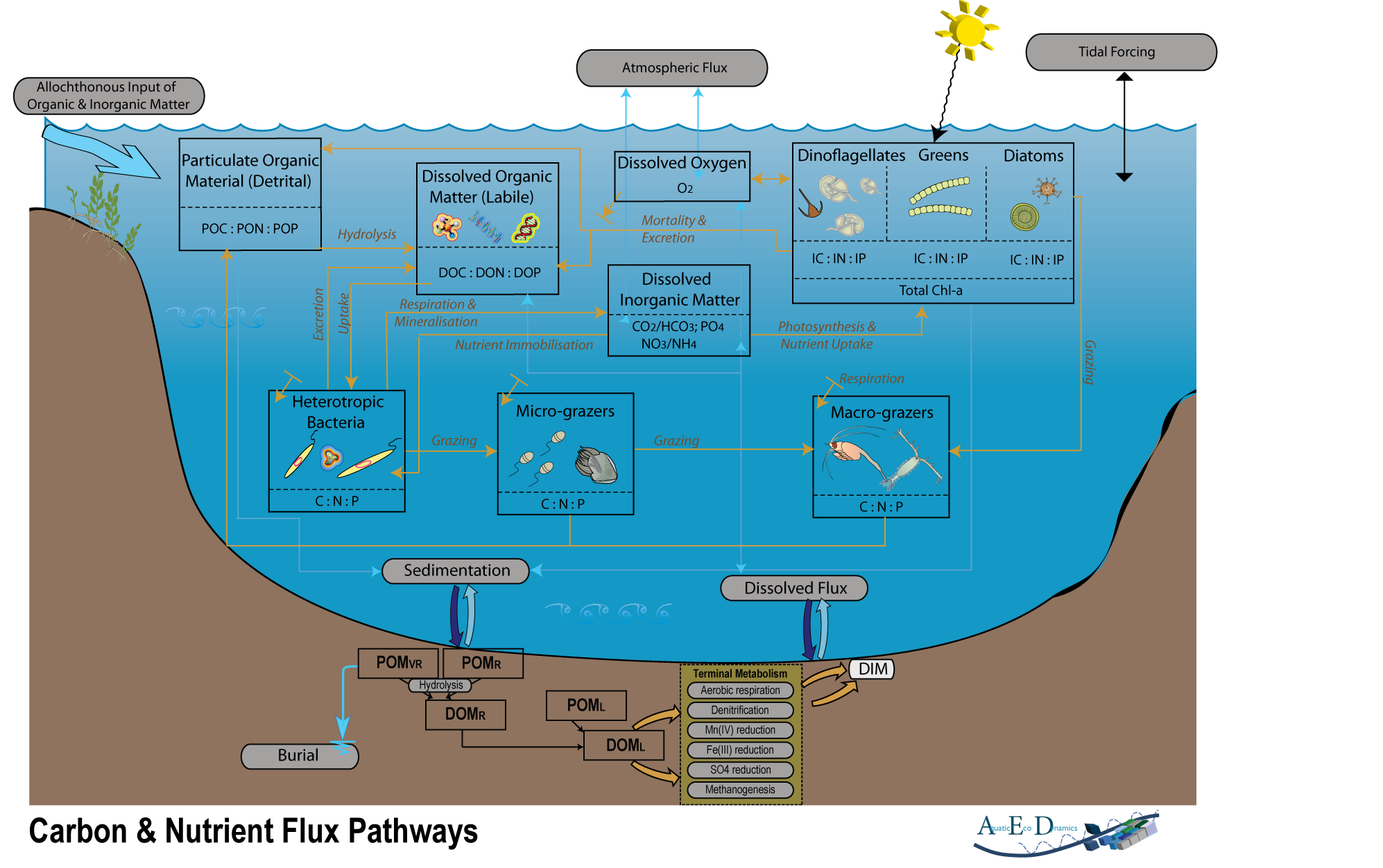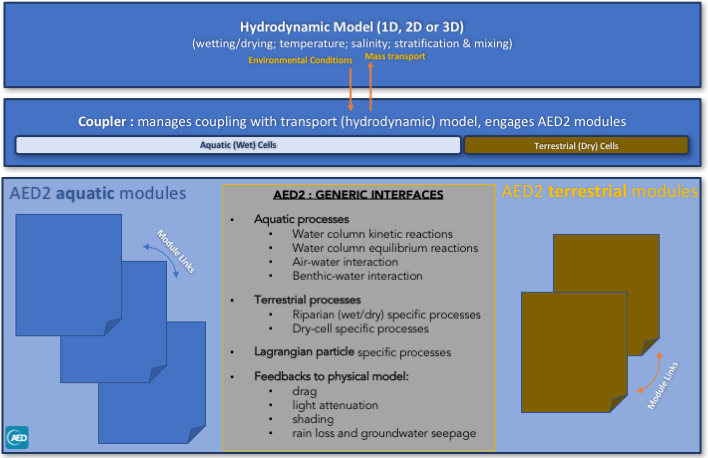Science / Overview
Background
This site outlines the Aquatic Ecodynamics (AED) modelling library - an open-source community-driven library of model components for simulation of "aquatic ecodynamics" - water quality, habitat and aquatic ecosystem dynamics. The model has been developed by our research group as a flexible library of interacting components and it can plug into the FABM framework (FABM-AED), or alternatively a new version of the library components can also be called directly from other software applications (AED2).
It is envisaged that the flexible nature of the model components will facilitate the model community to experiment with model structural complexity, to more easily share model innovations at the algorithm level, and support the development of common performance assessment approaches.
The modules have been applied across wetlands, lakes, rivers and estuaries, by taking advantage of the standard coupling interface between the scientific modules and hydrodynamic drivers. Due to this flexibility the model can be applied across a range of scales and contexts. For example through a 0D box model, the 1D model GLM, or the 3D finite volume model TUFLOW-FV.
Scientific Basis
The AED library consists of numerous modules that are designed as individual model ‘components’ able to be configured in a way that facilitates custom aquatic ecosystem conceptualisations – either simple or complex. Users select water quality and ecosystem variables they wish to simulate and then are able to customize connections and dependencies with other modules, including support for easy customisation at an algorithm level how model components operate (e.g. photosynthesis functions, sorption algorithms etc). In general, model components consider the cycling of carbon, nitrogen and phosphorus, and other relevant components such as oxygen, and are able to simulate organisms including different functional groups of phytoplankton and zooplankton, and also organic matter. Modules to support simulation of water column and sediment geochemistry, including coupled kinetic-equilibria, are also included.
Structure of the AED/AED2 Library
The AED2 model documentation can be find here, and the scientific review of its modules are provided the accompanying pages.
The below diagrams sumamrise the deisgn philosophy of the library.
Overview & Library Design
The philosophy of the AED/AED2 library is that biogeochemical and ecological modules have a standard class structure. Variables within each module are subject to transport and mass conservation, as manageed by the scalar transport facility of the host hydrodynamic model.
Library Organisation and Module Summary
A wide array of modules are available with some operational only in water, some operational where no water is present, and some can operate under both dry and wet conditions.



